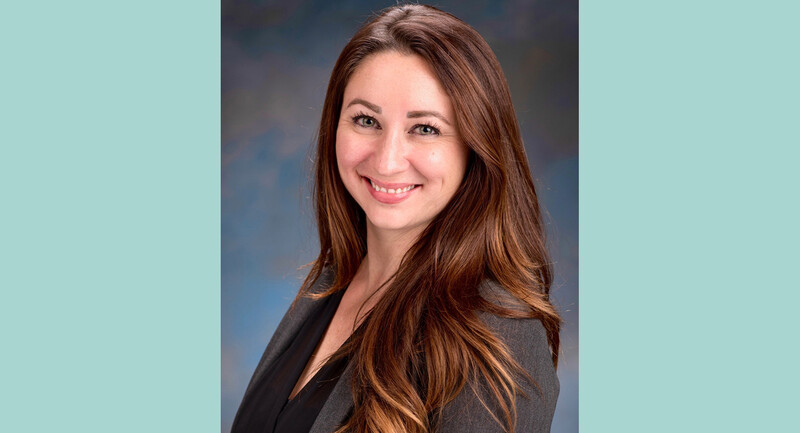All across the globe, countries are trying to improve education. Some countries are in the earlier stages of education development, mainly striving to expand access to elementary and lower secondary education and to ensure transmission of basic skills; in these nations, reformers are less concerned with the quality of the teaching force than with just getting enough teachers into classrooms. Other countries are entering the global knowledge economy and seeking to prepare their students with the complex, higher-order cognitive skills that economy demands; in these nations, the major focus is strengthening the quality and effectiveness of the teacher workforce (Organisation for Economic Cooperation and Development [OECD], 2005).
Contrary to what many people assume, a high-quality teacher workforce is not the simple result of some traditional cultural respect for teachers. Rather, it requires deliberate policy choices. High-performing countries build their human resource systems by putting the energy up front; they concentrate on attracting, preparing, and supporting good teachers and nurturing teacher leadership talent, rather than on reducing teacher attrition and firing weak teachers (Stewart, 2009). These countries spend a higher proportion of their education dollar on classroom teachers than the United States does. This often requires trade-offs in terms of class size, special services, or facilities.
Here are some examples of how high-performing and significantly improving nations are developing effective educators.
Attracting and Recruiting Teachers
In modern, diversified economies, education has to compete with other sectors for talent. Some countries, such as Finland, have found that when they raised the standards for new teachers, they increased the status of teachers and actually received more applicants. An important factor in attracting the most able young people into teaching in Finland is that teaching is considered an independent and respected profession rather than a mere technical implementation of externally mandated standards and tests. In Finland, teaching is now a highly sought-after career; only one in 10 applicants is accepted into teacher preparation programs after two rounds of selection (Sahlberg, 2010).
Other countries don't just wait for prospective teachers to apply but actively recruit teachers. Singapore, for example, selects prospective teachers from the top one-third of their secondary school class. Strong academics are essential, along with a commitment to the profession and to serving the nation's diverse students. Trainees receive a stipend equivalent to 60 percent of a teacher's salary while in training and commit to teaching for a minimum of three years (Ho, 2010). Singapore also actively recruits mid-career candidates, believing their experience in the world of work is valuable to students (Asia Society, 2006).
In England, the government has taken steps to raise the status of the profession: a sophisticated advertising campaign that recruited new candidates; teacher awards programs on television; encouragement of alternate routes into teaching to compete with traditional university teacher training programs; and bonuses for those who commit to teach in high-need communities. As a result, teaching went from the 92nd career choice to the top career choice within five years (Barber & Mourshed, 2007).
When shortages occur, all these countries focus on recruiting teachers in innovative ways rather than lowering the standards to get more teachers. One added benefit of this attention to recruitment and induction is far lower attrition rates among new teachers than in the United States.
Teacher Preparation
Relatively few international comparisons of teacher education have been conducted. However, we do know that some high-performing countries (such as Finland and Singapore) limit the number of candidates accepted into teacher education programs to get higher-quality applicants and to secure better job placement rates, thereby increasing the attractiveness of the profession. Other countries (such as England and the United States) do not limit the numbers of people who prepare to become teachers.
Criticisms that teacher education is too theoretical and that universities do not take responsibility for the quality of their education graduates are heard in many countries. So too is the concern that colleges of education are not moving fast enough to respond to rapid global changes in the economy and in essential career skills.
Countries vary considerably, however, in their approaches to modernizing teacher education. In China and Finland, for example, traditional teacher preparation programs are accepted and valued, and adaptations are made within the existing institutional framework (Asia Society, 2006; Sahlberg, 2010). In Ontario, Canada, on the other hand, government reformers viewed teacher education institutions as too hard to change, so reform efforts ignored these institutions and focused primarily on improving professional development for existing teachers (Levin, 2008). England chose the strategy of creating alternate routes to compete with traditional providers.
The central theme of Singapore's Teacher Education Model for the 21st Century (TE21), announced by its National Institute of Education in 2009, is that 21st century learners need 21st century teachers who not only possess 21st century literacies themselves, but also can create the learning environments that enable their students to develop such skills. In a study of Singapore schools that I recently completed for an upcoming OECD report, I found that many of the changes put forward under TE21 echo the teacher preparation reforms being made in a number of other countries. These include placing more emphasis on guided practice in classroom settings from the beginning of training and holding teacher education institutions accountable for a set of initial teacher competencies that directly relate to the national standards.
Professional Development
Regular professional development is essential for effective teaching and learning. The policy challenge is to determine what forms of professional development are effective and to implement them in all schools, not just some. In the United States, professional development is not tightly linked to the instructional agenda of the school, so it is often incoherent and many teachers avoid participation.
In contrast, all teachers in Japan participate regularly in lesson study. This traditional practice, in which groups of teachers review their lesson plans and consider how to improve them, provides a mechanism for self-reflection and continuous improvement. In China, classrooms are routinely open for observation; teacher trainees, practicing teachers, and administrators are required to observe and provide feedback on a certain number of their colleagues' lessons each year. China also has weekly teacher research groups that focus on classroom improvement and whose work may be published (Asia Society, 2006). Singapore's policy of "teach less, learn more" frees up time in the school day for professional development as well as planning and working with students outside the classroom; every teacher is guaranteed 100 hours of professional development every year (Darling-Hammond, 2010).
Compared with U.S. teachers, those in Asia spend fewer hours teaching classes and more hours providing feedback to students individually or meeting with families to collaboratively diagnose classroom problems and design solutions. The trade-off for this increased attention to improving professional practice tends to be larger class sizes (Schleicher & Stewart, 2008).
Compensation and Evaluation
International studies show that to attract high-quality graduates into the teaching profession, entry-level teacher salaries must be roughly comparable to those in other careers that these graduates could enter. But beyond the entry level, working conditions—being treated as a professional, having the opportunity to work with colleagues, and having opportunities to advance—seem more important than salary (Schleicher & Stewart, 2008).
Teacher evaluation is a controversial subject in many countries, and practices vary greatly from country to country. Policymakers in Finland and Canada, for example, have rejected merit-pay approaches because of a lack of empirical evidence supporting such approaches; both of these countries encourage extensive principal and teacher conversations about student progress (Asia Society & Council of Chief State School Officers, 2010). Chinese and Singaporean teachers, on the other hand, receive financial bonuses and promotions for high performance. In Singapore, teachers' performance is appraised annually by several people on multiple measures, including classroom instruction and results, collaboration with parents and community groups, and contribution to their colleagues and the school as a whole. It is important to note that high-performing countries have developed strong systems of professional and school-level accountability. They do not, however, base these systems solely on student test scores, but on a wider range of school improvement goals, professional contributions, and indicators of student well-being.
Teacher Distribution
In the United States, the distribution of teachers by qualifications and experience is highly unequal. In countries that have a uniformly strong profession, such as Finland, this issue is relatively unimportant. However, most large countries do have to pay attention to teacher distribution.
In China, where there has been massive migration to the cities, it is increasingly difficult to find teachers willing to work in rural areas. Consequently, China provides scholarships to people in rural areas to train as teachers. Rural teachers also earn 10 percent more and may have housing built for them. China provides long-distance professional development through satellite television and the Internet, as well as by organizing rural schools into clusters with one central resource center for materials and assistance (Asia Society & Council of Chief State School Officers, 2010).
The Australian federal government also gives financial incentives to teach in rural areas, away from the coasts where most young Australians prefer to live. In fact, providing bonuses to teach in hard-to-staff rural or urban schools is a common practice globally (McGaw, 2010).
Principal Recruitment and Training
At the same time that countries are establishing national standards or national curriculums to drive their systems, they are also transferring more authority for meeting education goals to the school level (National Governors Association, Council of Chief State School Officers, & Achieve, 2008). This trend, together with the recognition that weak school leadership can result in poor school performance and high teacher turnover, has brought increasing attention to effective recruitment and training of prospective principals.
England established its National College of School Leadership in 2000 and also developed programs for aspiring leaders and peer support mechanisms for new head teachers (principals) in their first two years. The National College program, which is partly online and partly residential, is now mandatory for all prospective school heads (Hopkins, 2007). China has two high-level, university-based centers on school leadership, one for primary and one for secondary schools; these centers run extensive executive training sessions for current principals.
My recent research for the OECD in Singapore found that this country identifies teachers with leadership talent early in their careers and moves these teachers into middle management and then assistant principal roles with accompanying experiences and training. If individuals do well in those roles, they may be selected as prospective principals and spend six months at the Leaders in Education program at the National Institute of Education.
The focus of principal training is on innovation and school transformation. Participants conduct a project to revamp some aspect of their current school; they also take a two-week trip to study a significant innovation elsewhere in the world and then propose how it could be adapted to Singapore schools. As part of Singapore's continuous improvement strategy, principals are also transferred periodically between schools and sometimes between schools and the Ministry of Education.
Lessons for U.S. Education
As countries face the challenges of a global knowledge economy that requires them to develop higher levels of knowledge and new capacities in their students, they are focusing intently on ways to attract high-quality candidates into the teaching profession, to improve and modernize teacher preparation, to improve teacher professional development, and to make a quantum leap in the training of principals and head teachers who can lead school transformation efforts.
None of the policies and practices reviewed in this article is unknown in U.S. schools; in fact, examples of most can be found somewhere in the country. But the United States has not yet found ways to systematically bring together and apply such world-class human resource practices in its schools. We urgently need to do this.
In a nation as large and decentralized as the United States, it may not be possible to revamp human resource policies and funding at the national level. A state or a city, however, could bring together these best practices and work with the relevant stakeholders to create a comprehensive system that would ensure every student a good teacher and every school a great leader.









